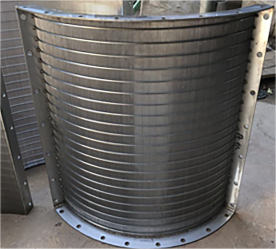Construction Site Fencing Importance and Considerations
In the world of construction, safety and security are paramount. One of the most critical elements in achieving these goals is the effective use of fencing around construction sites. Construction site fencing serves as a barrier that protects both the site and the surrounding community. This article explores the importance of construction site fencing, its various types, regulations, and best practices.
Importance of Construction Site Fencing
The primary purpose of construction site fencing is to enhance safety and security. At any construction site, there are numerous hazards, including heavy machinery, deep excavations, and exposed materials. Fencing creates a physical barrier that helps keep unauthorized personnel, particularly children and pedestrians, out of dangerous areas. By mitigating the risk of accidents, site fencing plays a crucial role in promoting public safety.
Moreover, construction sites often hold valuable equipment and materials. A sturdy fence helps prevent theft and vandalism, protecting investments and reducing financial losses. In many cases, construction companies may be held financially liable for damages incurred due to inadequate security measures. Thus, a well-designed fencing solution can serve as a deterrent against criminal activity.
Types of Fencing
There are several types of fencing commonly used at construction sites, each offering different levels of protection, cost, and aesthetic appeal. The most popular options include
1. Chain Link Fencing This is one of the most widely used fencing solutions for construction sites. It is cost-effective, durable, and allows visibility into the site, making it easy to monitor activity. Chain link fences can be topped with barbed wire for added security.
2. Metal Security Fencing Offers a higher level of security than chain link. Made from solid steel, these fences are difficult to breach and are often used for high-risk sites or valuable projects. They sometimes feature anti-climb designs.
3. Construction Barricades Often used in urban areas, lightweight barricades can be easily moved and shifted. They are typically made from plastic or wood and are effective for delineating work zones. While they provide less security than metal fences, they are useful for directing pedestrian traffic and notifying the public of ongoing work.
4. Acoustic Fencing In locations where noise pollution is a concern, acoustic fencing can be employed. These fences are designed to minimize sound transmission, ensuring that nearby residents are not adversely affected by construction noise.
construction site fencing

Regulations and Compliance
Compliance with local regulations is crucial when setting up construction site fencing. Most cities and municipalities have specific guidelines regarding height, type, and installation of fencing around construction sites. It is essential for contractors to familiarize themselves with these regulations to avoid fines and legal repercussions.
Additionally, fencing must be maintained throughout the duration of the project. Regular inspections should be conducted to ensure that there are no breaches, damage, or deterioration that could compromise security. If any part of the fence is damaged, repairs should be made immediately.
Best Practices for Construction Site Fencing
To maximize the benefits of construction site fencing, contractors should adhere to best practices
1. Plan Ahead Before initiating a project, create a comprehensive fencing plan that considers the layout of the site, potential hazards, and community impact.
2. Choose the Right Type of Fencing Assess the specific needs of the site to select the most suitable fencing type. Consider security, visibility, and noise issues.
3. Regular Maintenance Schedule routine inspections and maintenance to ensure the fence remains in good condition and serves its intended purpose.
4. Engage with the Community Inform local residents about construction activity and the safety measures you have put in place, including fencing. This enhances community relations and builds trust.
In conclusion, construction site fencing is an essential component in ensuring safety, security, and compliance within the construction industry. By understanding its importance, types, regulations, and following best practices, contractors can effectively protect their sites and the surrounding community.
-
Why Galvanized Trench Cover Steel Grating Resists Corrosion
NewsJul.10,2025
-
The Versatility and Strength of Stainless Expanded Metal Mesh
NewsJul.10,2025
-
Load Calculations in Steel Grating Platforms
NewsJul.10,2025
-
Keeping Pets and Kids Safe with Chicken Wire Deck Railing
NewsJul.10,2025
-
Hole Diameter and Pitch for Round Perforated Metal Sheets
NewsJul.10,2025
-
Aluminium Diamond Mesh in Modern Architecture
NewsJul.10,2025
Subscribe now!
Stay up to date with the latest on Fry Steeland industry news.

